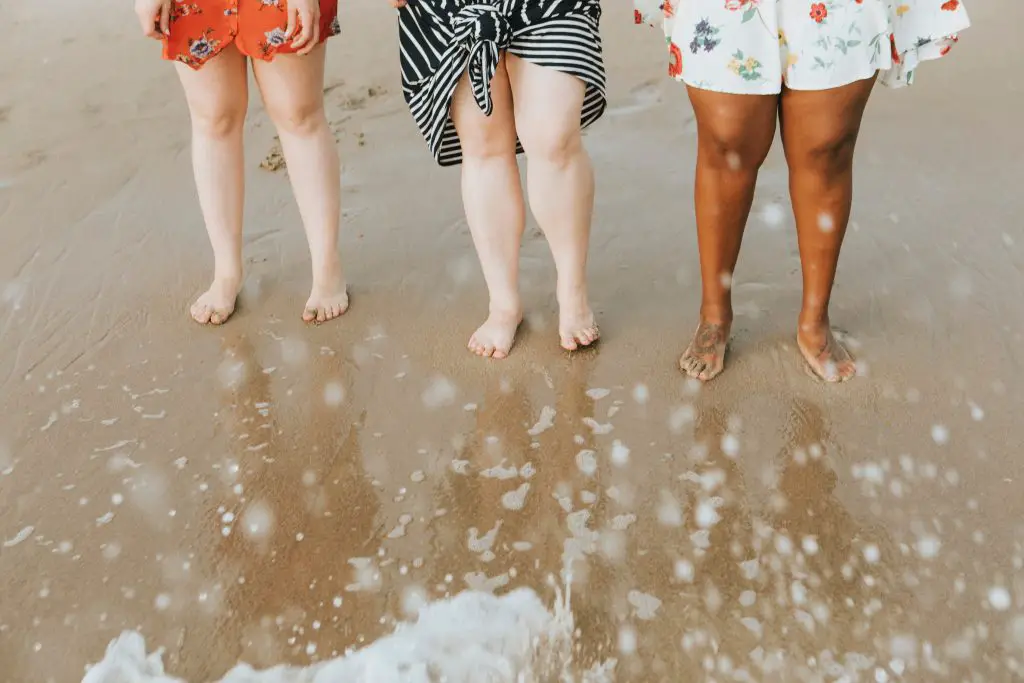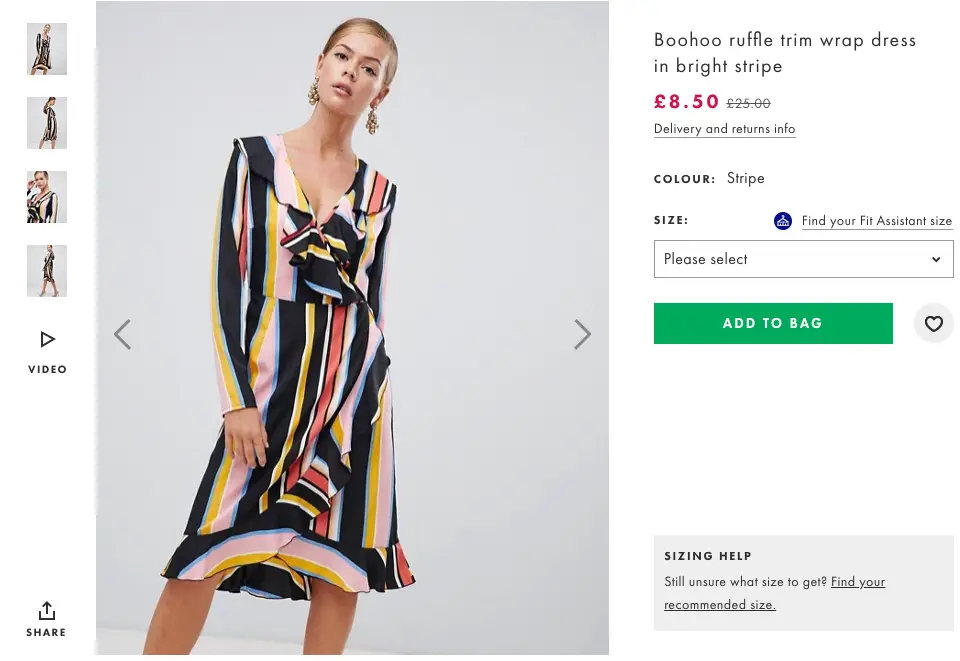Struggles of a Malaysian Shopper: Expensive and Lacking Quality
By Vanessa Ee-Lyn Gomes
Raise your hands if you’re curvy and have a sense of fashion but nothing ever fits and is too costly.
This seems to be a common problem in Malaysia. Shopping has always been a chore for me since I was young. At age 10, while most girls hadn’t “developed” yet, I did.Thus, upgrading my clothing choices to more mature selections of larger sizes, the kind suited for teens. It wasn’t particularly age-appropriate clothing, but it fit. While, most of my friends wore shirts with The Powerpuff Girls and other favourite cartoon characters, I was left wearing plain-coloured t-shirts and blouses.
It didn’t stop there. As I grew older, I dreaded the annual trip to buy new Chinese New Year and Christmas clothes. This time, it was because the clothing industry perceived my body size at the ripe age of 16 as an XL.
At that time, my mother was willing to fork out a lot of money just so I would feel pretty in whatever dress I liked. Most of these dresses ranged between RM80 and RM100, which was pretty expensive circa 2005. Fast forward to today, for me to get a decent dinner dress to attend a wedding
would make an RM300 dent in my wallet, at least! All because I’m a bit chubby in some places.
Shopping Abroad
A few years later when I furthered my studies in the UK, I was greeted by the likes of Primark and H&M among others. Here, there were people of all sizes picking out clothes and wearing whatever they liked. I was taken aback. A girl who is a size 6 and another who is a size 20 could get the exact same skater dress for the same price. The same applied to lingerie too, laced and polka-dotted designs weren’t just reserved for smaller breasts, unlike Malaysia, where bras that are C-cup and above tend to be boring and single-coloured.
Does this mean I can wear a pretty dress and show off my curves?
And does it also mean that I don’t have to pay an arm and a leg for simple clothes?
It was when I was studying abroad that I discovered that I am a UK size 14 and 16 for pants, due to the junk in my trunk. Overseas, I faced a different problem because most of the time, I couldn’t find clothes as size 14 was what they deemed as normal and usually sold out! I could finally enjoy this past time that many women my age found joy in. I could finally show a bit of curves without anyone criticising my body weight.
There is a clear discrimination when it comes to clothes. The “Asian” size is only one — small, skinny and petite. But then there’s the oppression of those who want similar privileges – not having to pay more for larger-sized clothes, being given a selection of decent and pretty clothes and lingerie, and not being punished with boring clothes for being chubby and curvy – and frankly speaking, we deserve it.
Size and Cost
Over the years, I learned that I wasn’t alone when it came to fashion discrimination in the country, and so I reached out to a few people familiar to the matter to gain their views on their shopping experiences here and abroad.

1. Age: 30 UK Size: 4-6
As I have a petite frame, the shoulder portion of certain tops tend to be too large. Petite sized clothes are hard to come by and tend to sell out really fast, and if there is, it’s not pocket-friendly. Local clothes are not reasonably priced and the quality is not good. It doesn’t match the earning spending ratio of the average Malaysian. Imported brands are marked up more than what they would have been sold in their home countries. Price of clothing overseas is much cheaper as compared to when they are sold here.
2. Age: 19 UK Size: 12-14
I generally shop at DP, ZARA, H&M, M&S, etc and the problem I have shopping there is how something like a basic top costs quite a bit of money and in the end, I’m just getting a plain ol’ top. I know stores like FOS and Brands Outlet would be cheaper but… their quality doesn’t look that great so I don’t even bother walking in. The fact that brands who sell quality products cost a lot of money is an issue for me. Stores I’ve been to abroad generally have a better selection of outfits than Malaysia does and the price is reasonable as well. Also, customer service is tip-top. I think it’s unfair, just because I want to wear nice, fashionable outfits, it don’t mean I should spend an arm and a leg for it. I exaggerate but the price difference is stark.
3. Age: 27 UK Size: 14-16
I can never seem to find my size when shopping so I just resort to buying these baggy tank tops that I can use all the time, but that’s more casual. When it comes to proper clothes, like for the office, it’s super hard to find clothes that fit my proportions. Sometimes I get demotivated while shopping, especially if I look in the mirror and I don’t like how the clothes look on me and I start scolding myself for being fat. So I try to avoid it all together unless necessary. The quality of clothes overseas are better and cheaper, and the sizes fits perfectly for a busty person like me. There needs to be a mentality change here, due to the fact that not that many people are accepting that bigger women wear figure-hugging clothes. The mentality is changing for sure, but more needs to be done.
A Price Gap We Pay For
As we can see here, there are a lot of flaws in the local shopping industry, specifically on sizing, clothing quality, price gap and styles of clothes for plus sized-women. There’s also the issue that a simple item here costs at least 50% more than the costing of clothes overseas, regardless of body size.
Example: Checks online for a simple work dress on sale on the Nichii website costs RM90.95 whereas a similar dress on Asos also on sale, costs £8.50 (RM44.40).


Smaller women face the same issue as plus sized women, where there are inadequate clothes with proper sizing for those who are size 6 and below. I spoke to someone who was a UK size 4, and she says that her whole life, she has been trying to put on weight – from taking supplements, hitting the gym to bulk up and eating more – just to get rid of the stereotype that she doesn’t eat enough. The plight of the underweight is equally as distressing as those who are plus sized and overweight when it comes to social anxiety and body image issues.
On top of that, the e-commerce market has just lost a pool of customers. While sites such as Asos, Zalora and FashionValet may cater for larger sizes at cheaper prices, sometimes it may not be consistent. There have been experiences where one may fit a size M for one brand, but not for another. Consistency is definitely key when it comes to servicing the retail market, including shoes, but that’s a story for another day. And while online shopping for clothes sourced from overseas is cheaper, it takes time for trial-and-error before one can comfortably purchase clothes from a site, and not to mention the delivery time from the UK or US can take up to a month to be delivered to Malaysia.
But right now, one thing is clear – the Malaysian market seems to cater to those who are between UK sizes 8 and 12, which is quite a small range. An added fact is that inconsistent sizing demotivates people from walking into certain stores, as I have personally experienced when walking the corridors of cheap clothing havens such as Berjaya Times Square and Lot 10 in KL. If we look deeper into the subject matter, while it may cause anxiety and body image issues, it can lead to other, more pressing disorders such as anorexia and bulimia or even starvation for plus sized individuals.
There’s definitely a market to tap into here when it comes to plus-size fashion, and not to discriminate, petite girls too. Some brands have penetrated the market and seem to be doing well by offering stylish and decent clothing such as Adevi Clothing and Luv Curvy Fashion.
Another thing you can take away from them is their confidence in any type of clothing. In the light of the “positive body image” movement around the world that actively started a few years ago, the founders of Adevi were part of a social media controversy when Instagram took down a photo of them in bikinis. They fought back, of course, and fought back hard and this is something to be admired.
Final Thoughts
In Malaysia, we have come a long way when it comes to body image portrayals when it comes to plus sized women but the only way it will become a norm is if we continue to where whatever we want, whenever we want it (appropriate to the occasion, of course) and unapologetically, without any shame. Before you know it, the next generation of children won’t have to face the same size discrimination we did when we were growing up.
What else do you think can be done to make fashion more accessible to people of different sizes? Comment below with your thoughts!
Vanessa Ee-Lyn Gomes is a Malaysian journalist with 6 years experience under her belt, covering local news and lifestyle features, as well as a passion for raising awareness on human rights and societal issues.





